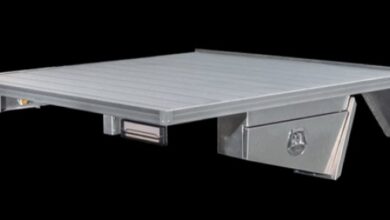5 Most Common Symptoms of a Water Pump Failure in a Car

Just silently turning away in the background, circulating coolant — yet performing this silent function, keeping your engine perfectly cool. Once it packs up, however, the side effects are a trifle less than covert. Are you supposed to find out if your water pump car is broken? Is there a way to know? Other than your car actually soaring into flames? Well, yes. There’s always a way!
1. Engine Overheating
The biggest red flag is your engine overheating. If your temperature gauge seems to be on the rise more rapidly than usual or if steam is coming out from under your hood, then your water pump probably isn’t doing its job. A non-functioning pump won’t be able to circulate coolant, which means the engine can’t lose its heat. If an engine gets too hot, parts can melt and fuse together. And your engine could fail outright.
2. Coolant Leaks
A small puddle of green or orange, or pink liquid when you pull your car out of the garage could simply be leftover winter washer fluid that is dripping from your vehicle. The water pump has a number of seals and gaskets that seal the coolant inside. Over time, these can wear and allow the coolant to leak out. This makes it harder for the cooling system to keep your engine operating safely. If you have leaks that keep coming back and are originating from the front of the engine or radiator, check the pump and the heater hoses first.
3. Unusual Noises from the Front of the Engine
If you hear a high-pitched whine or growl from under the hood, don’t just crank up the volume on your radio. It may be an indication that the bearing or pump shaft is worn out. As the bearing wears, the pump shaft can also develop some play, which can generate noise that will only get worse as it gets louder.
4. Steam or Smoke from the Radiator
When coolant is no longer going through the radiator and the engine block, well, it starts to boil — which can lead to steam coming out of the front of the car when you’re idling, or in traffic. Any steamy situation suggests your water pump isn’t applying the proper pressure or it’s not circulating correctly.
5. Corrosion or Rust on the Pump Surface
Check your car’s performance, but also your car’s outward appearance. If you notice brown rust or white corrosion on the water pump housing, there’s likely a previous slow leak or corrosion deposit left behind from bad coolant. This corrosion will eat away at the metal housing, and it can also weaken the seals.
Final Thoughts
A bad water pump is one neglect away from becoming an expensive ordeal, so taking good care of it is important. Keeping a schedule for checking the coolant reservoir and looking for leaks can surely increase the lifespan of your pump. If you see the signs mentioned above in your car, don’t wait. Spending a little more for a water pump car replacement from a quality brand can ensure optimal cooling and a great life for your car.



